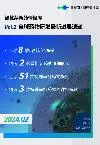Atsena Therapeutics Announces Initiation of Dosing in Second Cohort of Phase I/II Clinical Trial Evaluating ATSN-201 Gene Therapy for the Treatment of X-linked Retinoschisis (XLRS)
2024-03-14
基因疗法临床研究临床结果
Subretinal injection of ATSN-201 was well tolerated in all patients in first cohort with no serious adverse events reported
Enrollment is ongoing in first clinical trial utilizing AAV.SPR, the company’s novel spreading capsid
March 13, 2024 -- Atsena Therapeutics, a clinical-stage gene therapy company focused on bringing the life-changing power of genetic medicine to reverse or prevent blindness, today announced dosing has been initiated in the second cohort of the LIGHTHOUSE study, a Phase I/II clinical trial evaluating subretinal injection of ATSN-201 for the treatment of X-linked retinoschisis (XLRS). ATSN-201, a best-in-class gene therapy product candidate, leverages AAV.SPR, the company’s novel spreading capsid, to achieve therapeutic levels of gene expression in photoreceptors of the central retina while avoiding the surgical risks of foveal detachment.
ATSN-201 was well tolerated in all three XLRS patients in the first cohort and no serious adverse events were reported. The Data and Safety Monitoring Board recommended proceeding with the second cohort, in which patients will receive the next dose level of ATSN-201.
"We are encouraged by the excellent safety observed with the low dose of ATSN-201 in the LIGHTHOUSE study, which represents the first clinical utilization of AAV.SPR. Additionally, initial indications of structural and functional improvement observed within and beyond the injection areas suggest successful lateral spread of the vector,” said Kenji Fujita, MD, Chief Medical Officer of Atsena Therapeutics. “Advancing into the second cohort brings us one step closer to potentially bringing a much-needed one-time treatment to patients with XLRS, an inherited retinal disease that causes progressive vision loss and can lead to blindness.”
The LIGHTHOUSE study is a Phase I/II, open-label, dose-escalation and dose-expansion clinical trial evaluating the safety and tolerability of ATSN-201 in male patients ages 6 and older with a clinical diagnosis of XLRS caused by pathogenic or likely pathogenic mutations in RS1. Enrollment in the LIGHTHOUSE study is ongoing. For more information, visit ClinicalTrials.gov (Identifier: NCT05878860).
About X-linked Retinoschisis (XLRS)
XLRS is a monogenic X-linked disease caused by mutations in the RS1 gene which encodes retinoschisin, a protein secreted primarily by photoreceptors. RS1 is localized to the extracellular surface of rods, cones, and bipolar cells. XLRS is characterized by schisis, or abnormal splitting of retinal layers, which causes impaired visual acuity that is not correctable with glasses and leads to progressive vision loss and ultimately blindness. XLRS primarily affects males and is typically diagnosed in early childhood. Approximately 30,000 males in the U.S. and EU have XLRS, for which there are currently no approved treatments.
About AAV.SPR
AAV.SPR, one of Atsena’s novel capsids, spreads laterally beyond the subretinal injection site to enable safe and efficient transduction of the central retina (where schisis cavities predominate in XLRS patient retinas) when injected into areas outside the macula. A preclinical study in non-human primates demonstrated that AAV.SPR promotes transgene expression well beyond subretinal injection bleb margins. This is in stark contrast to benchmark AAV vectors, which remain confined to the original bleb margins. At clinically relevant doses, AAV.SPR efficiently transduces foveal cones without the need for surgical detachment and does not cause inflammation. For more information about the preclinical study and how AAV.SPR works, visit https://atsenatx.com/our-approach/laterally-spreading-aav/.
About Atsena Therapeutics
Atsena Therapeutics is a clinical-stage gene therapy company developing best-in-class treatments for the reversal or prevention of blindness from inherited retinal diseases. The company’s lead program is evaluating ATSN-201 in an ongoing Phase I/II clinical trial for X-linked retinoschisis (XLRS), a progressive genetic condition affecting boys and men that is typically diagnosed in childhood. Another ongoing Phase I/II clinical trial is evaluating ATSN-101 for Leber congenital amaurosis type 1 (LCA1), one of the most common causes of blindness in children. Atsena’s pipeline is powered by novel adeno-associated virus (AAV) technology tailored to overcome the hurdles presented by inherited retinal diseases. Founded by pioneers in ocular gene therapy, Atsena is led by an experienced team dedicated to addressing the needs of patients with vision loss.
The content above comes from the network. if any infringement, please contact us to modify.
靶点
立即开始免费试用!
智慧芽新药情报库是智慧芽专为生命科学人士构建的基于AI的创新药情报平台,助您全方位提升您的研发与决策效率。
立即开始数据试用!
智慧芽新药库数据也通过智慧芽数据服务平台,以API或者数据包形式对外开放,助您更加充分利用智慧芽新药情报信息。



